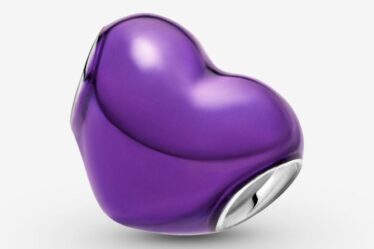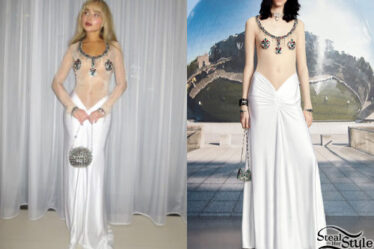
If all goes according to plan, looming in front of London’s Tower Bridge for several hours on Wednesday evening will be the beaming, 3D colossuses of supermodel Gisele Bündchen and alternately of South Korean star Lee Min-ho, looking like a couple of bosses.
The 10-metre-tall figures will be holograms created by Hugo Boss to promote its BOSS line, which has named Bündchen a new face of the brand. The company said it will be the first fashion brand to launch a major campaign with large-scale holograms.
Megawatt spectacle is what it’s going for.
“A hologram is larger than life. It still disrupts your day-to-day journey,” said Nadia Kokni, senior vice president of global Marketing and brand communications at Hugo Boss. “If you’re used to the endless monotonous scroll, there’s still something spectacular about, ‘Is it or is it not real?’”
Companies are seeking tech-enabled ways of recapturing attention and breaking through the constant barrage of ads audiences face online and off. On the small scale, they’re turning to augmented reality, which can let a user see a digital version of a product layered over their physical environment, or embracing surrealist marketing stunts. At the other end of the size spectrum are 3D billboards — used by the likes of Nike and Louis Vuitton — whose content seems to spill out into the real world.
Holograms are now another option. The technology has advanced greatly in recent years, Kokni said, and immersive digital-physical experiences are popular. There’s ABBA’s hologram tour, the Sphere in Las Vegas and virtual exhibitions that let audiences walk through the work of artists like Vincent Van Gogh.
To grab customers’ attention, brands need to keep up.
Kokni said Hugo Boss has a marketing innovation team that’s always trialling new ideas. The company made being a tech-forward company a pillar of the five-point strategy it presented last year.
“We’re constantly testing on different scales, different technologies,” she said. “If you want to be part of culture and popular culture, you also have to try new things and be abreast of what’s happening out there — and there’s a lot.”
The holograms themselves will be made from an array of transparent LED screens displaying video that was specially shot on a turning platform with specific lighting to create the 3D effect. During the live projection, there will also be smoke effects and choreographed lights to help create a sense of realism and depth. The images above are from a brief test run Hugo Boss ran.
The holograms are still just one element of the marketing mix amid all the usual channels for the campaign, which emphasises unlocking the power within as part of Hugo Boss’ bigger “be your own boss” messaging. A giant holographic model is one way to convey the point, and the format has its own advantages. It’s a way to create memorable experiences, in Kokni’s view, and has a playfulness and novelty that she believes can help Hugo Boss stand apart from the crowd.
That’s no small achievement these days. Digital advertising in particular has grown more expensive and less effective as brands piled into social-media platforms, creating endless competition. Brands have been looking for alternatives, such as out-of-home opportunities like billboards, which have seen a rebound after spending on them fell during the pandemic. Still, maybe the best marketing is anything that can get people to stop and pay attention.
“In this TikTok era, you need to make moments,” Matt Kissane, executive director at marketing agency Landor, told BoF after Calvin Klein’s successful campaign with actor Jeremy Allen White.
Technology is one way brands have sought to differentiate themselves. Louis Vuitton’s 3D billboard in late 2022 featuring Japanese artist Yayoi Kusama, for example, generated media coverage and plenty of conversation online.
How effective Hugo Boss’ holograms prove could depend in part on the weather. Rain shouldn’t be an issue, according to the company, but strong winds that blow the smoke away could diminish the effect.
But if all goes well, the hope is that Londoners passing by Tower Bridge will look up from their phones at the soaring holograms, and maybe raise up those phones to snap some pictures to share online.


